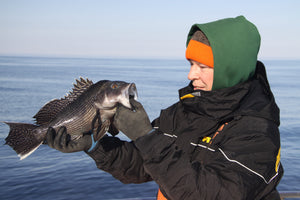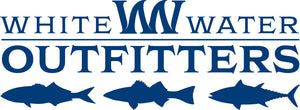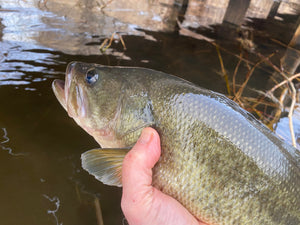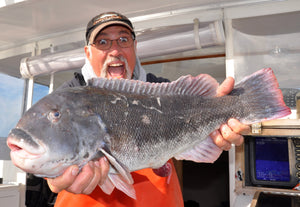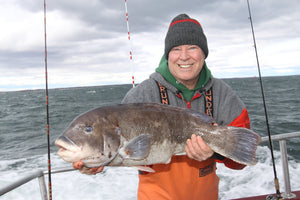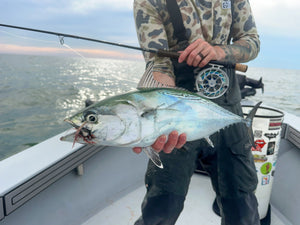Fall Run Preview 2025 - Part II
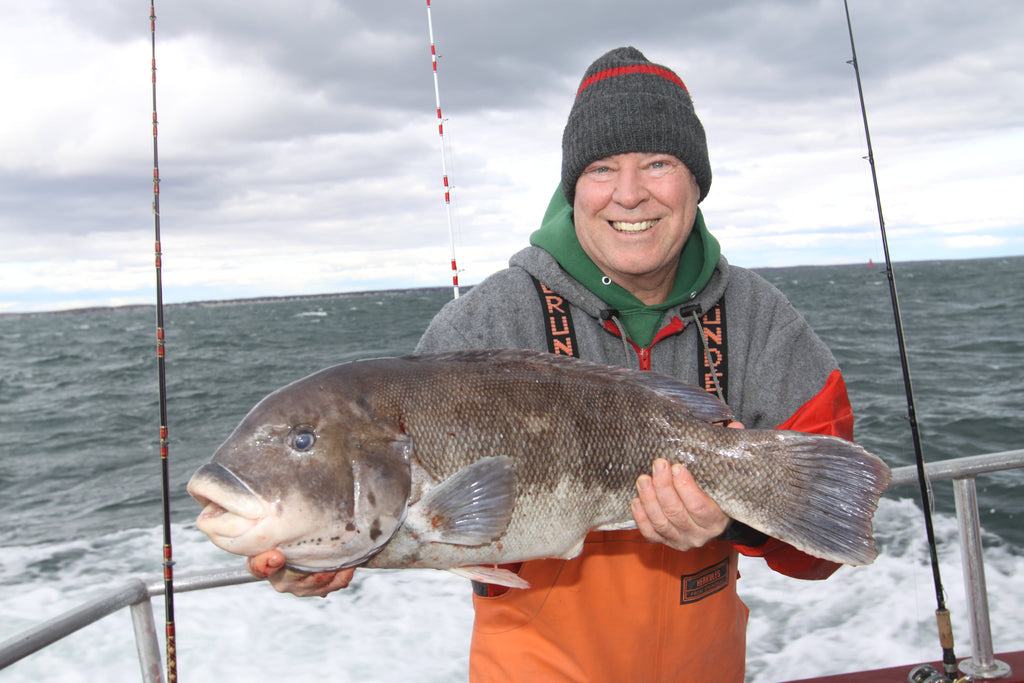
The fall season gives up some beasty blackfish on Long Island’s East End. This 15.5-pound brute fell to a green crab aboard the Orient Point charter vessel Nancy Ann. OutdoorTom.com photo.
Continuing from where we left off in Part 1, bottom fishing and big game action, admittedly opposite ends of the spectrum, are also primed for some explosive action in October and November. Indeed, it can be hard to break away from a hot striper or albie bite, but this is also a great time frame for filling the freezer with tasty and cooperative blackfish, scup and black sea bass – all three of which can run especially large this time of year.
For an added dose of adrenaline, a run offshore for big game action should fill your thrill. Giant bluefin should be in good supply not far off the beach in early October through most of November. All this as bigeye patrol the canyons. Here’s the latest forecast.
BOTTOM BOUNCING
Blackfish: The tautog scene has been quite productive over the past several fall seasons, and this one should be solid as well. Note, however, that blackfish season dates and regulations do differ based on where you target them.
For the Long Island Sound region, the fall tautog season kicks off on October 11 and ends December 9, with a 16-inch size limit and 3 fish possession limit. The New York Bight Region, which includes all marine and coastal New York State waters lying outside of the Long Island Sound Region, has an opening date of October 15, closing date of December 22, possession limit of four fish, and a 16-inch minimum size.
Expect the season openings to offer decent shore-bound possibilities and solid boating action as long as you can find suitable bottom structure, including rocks, ledges, wrecks and the like. This is also the time to ambush blackfish from jetties, or in shallow, rocky water depths of 30 feet or less. From a boat you can easily tempt these fish using JoeBaggs Lay Perfect Blackfish Jigs baited with green crab. From the rocks, bait-fishing with green crab and single-hook Jigging World Blackfish Rigs is a better option as it reduces the odds of snagging on the bottom.
A chance at bigger fish, and possibly even better action, should begin in early November, especially if fishing on offshore wrecks and boulder fields in water depths of 50 feet or greater. For this fishing, consider using a bait-and-wait approach with green crabs (or whites) the offering of choice. You’ll need to beef-up your gear for this deep-water action, but the rewards can be well worth the effort. Look for the season to peak just before Thanksgiving with the fish moving deeper with each succeeding week. Single-hook bottom rigs and snafu rigs are typically best for this.
 Sea bass love wrecks, which they often dominate in local ocean waters during October and November. OutdoorTom.com photo
Sea bass love wrecks, which they often dominate in local ocean waters during October and November. OutdoorTom.com photo
Porgies and Black Sea Bass: As we were working up this report in late September, the first slab porgies of fall began to make themselves noticed on inshore wrecks, inside Peconic Bay, and along the North Fork’s Long Island Sound beaches as well. These, along with black sea bass, serve well as either main targets or back-up species that just about guarantee some dinner fillets should primary targets like blackfish or stripers fail to work out. Both species are super-aggressive bottom feeders that will scoff up clams, squid strips, green crabs or even squid strip-tipped jigs and unadorned diamonds.
Like blackfish, the scup will peak inshore first before moving out to greater depths. For shore-based anglers, the porgies carry a minimum size limit of 9.5 inches. Scup taken from above decks must measure at least 11 inches long to see the inside of your cooler. Porgy season runs through December 31.
Sea bass tend to be more structure-conscious than the porgies, with wrecks holding them best throughout the year but especially in the fall. While they have no problem mixing with scup on nearshore wrecks, they can absolutely dominate wrecks in water deeper than 80 feet where they’ll smash diamond jigs, squid baits and skimmer clam. The fall season for sea biscuits runs through December 31.
 Close-range tuna fishing on jig & pop tackle is a blast! Jeff Lomonaco and Ethan Ostrander picked a decent weather day and fought and landed this one in a 20 foot bay boat.
Close-range tuna fishing on jig & pop tackle is a blast! Jeff Lomonaco and Ethan Ostrander picked a decent weather day and fought and landed this one in a 20 foot bay boat.
Big Game: On the tuna front, things seem to be shaping up really well for some super fall action. September closed with plenty of bait on the inshore grounds and some good water moving into the canyons. Inshore, a fair number of giant quality bluefin are already on the scene for catch-and-release fishing. Live bunker, live bluefish and live squid baits fished in 50 to 100 feet of water both east and west of Shinnecock Inlet should be your starting point - but expect the bluefins to eventually slide further out to concentrate about 40 miles from the inlet. The deeper action should be mostly a chunk bite around the draggers, but you can also jig these fish or pop them on top with Madd Mantis Cherry Poppers and Nomad Streaker Jigs.
Out in the canyons, the Atlantis and West Atlantis areas should reward trollers with big eyes during the day. Single lures, Joe Shute Ballyhoo Skirts rigged with ballyhoos or RonZs, daisy chains and spreader bars should all produce. These fish should average 125 – 200 pounds, with some larger. Expect them to work westward along the edge as the season progresses, taking up stations at the Fishtails, Dip and, eventually, Hudson Canyon.
On the night bite, those same canyon waters should produce some solid chunking action with yellowfins and some bigeyes as the tuna follow warmer water and the bait migration.
With warm water continuing to push westward and the bait plentiful, October has the potential to be explosive from a big game standpoint. Pick your weather windows wisely and make the best of it.
- Bryce Poyer

